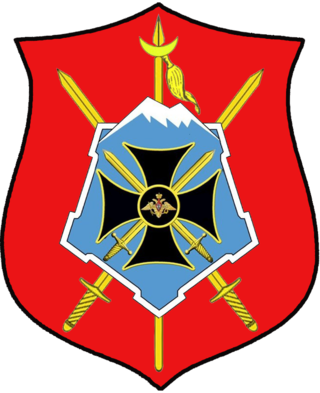
Aleksandr Zolotinskovich Ankvab is an Abkhaz politician and businessman who was president of Abkhazia from 29 May 2011, until his resignation on 1 June 2014. Under president Sergei Bagapsh, he previously served as prime minister from 2005 to 2010 and vice-president from 2010 to 2011. He was appointed prime minister again on 23 April 2020.
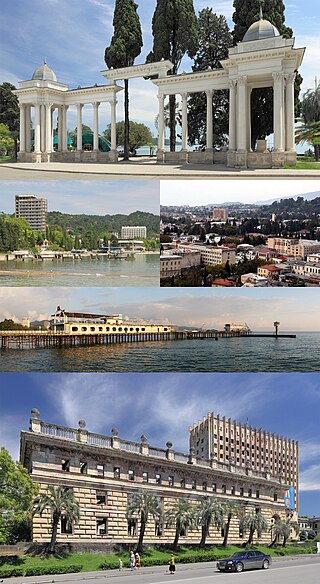
Sukhumi is a city in a wide bay on the Black Sea's eastern coast. It is both the capital and largest city of the Republic of Abkhazia, a partially recognised state widely recognized as a part of Georgia. The city has been controlled by Abkhazia since the Abkhazian war in 1992–93. The city, which has an airport, is a port, major rail junction and a holiday resort because of its beaches, sanatoriums, mineral-water spas and semitropical climate. It is also a member of the International Black Sea Club.

Ochamchire or Ochamchira is a seaside city on the Black Sea coast of Abkhazia, Georgia, and a centre of an eponymous district.
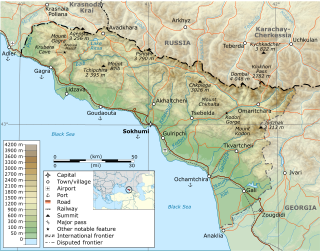
The War in Abkhazia was fought between Georgian government forces for the most part and Abkhaz separatist forces, Russian government armed forces and North Caucasian militants between 1992 and 1993. Ethnic Georgians who lived in Abkhazia fought largely on the side of Georgian government forces. Ethnic Armenians and Russians within Abkhazia's population largely supported the Abkhazians and many fought on their side. The separatists received support from thousands of North Caucasus and Cossack militants and from the Russian Federation forces stationed in and near Abkhazia.
Football is a major sport in Abkhazia. During Soviet times, the main club within Abkhazia itself was FC Dinamo Sukhumi, but Abkhazian footballers were prominent in the Georgian team FC Dinamo Tbilisi and in other Soviet teams. In 1994, after its declaration of independence from Georgia, Abkhazia organised a nine-team amateur league.

The Abkhazian Armed Forces are the military forces of Abkhazia. The forces were officially created on 12 October 1992, after the outbreak of the 1992–1993 war with Georgia. The basis of the armed forces was formed by the ethnic Abkhaz National Guard. The Abkhaz military is primarily a ground force but includes small sea and air units. According to the authorities of the Republic of Abkhazia, the Abkhazian Land Forces are organised along the Swiss model – in time of peace they have personnel of 3,000 to 5,000 and in case of war further 40–50,000 reservists are called out. Georgia regards the Abkhaz armed forces as "unlawful military formations" and accuses Russia of supplying and training the Abkhaz troops.
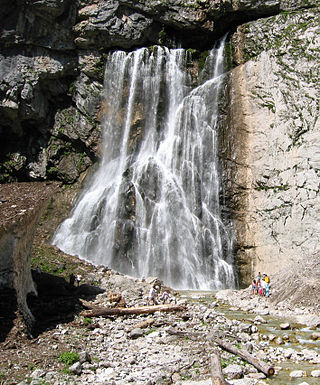
Gagra District is a district of Abkhazia. It corresponds to the Georgian district by the same name. In medieval times, it was known as the southern part of Sadzen. It is located in the western part of Abkhazia, and the river Psou serves as a border with Krasnodar Krai of Russia. Its capital is Gagra, the town by the same name. The population of the Gagra town zone in 1989 was 77,079, but this number dropped dramatically following the collapse of the Soviet Union and the 1992-1993 war in Abkhazia,, to 37,002 at the time of the 2003 census. Ethnic Armenians now constitute a plurality in the district.

During the Soviet-era, the Abkhaz ASSR was divided into six raions (districts) named after their respective capitals.
Many inhabitants of Abkhazia are Orthodox Christians, With significant minorities adhering to Islam and the Abkhaz neopaganism, or the "Abkhazian traditional religion". The influence of this last has always remained strong and has been experiencing a revival through the 1990s and 2000s.

Abkhazian railway is a rail operator in the partially recognised state of Abkhazia. Under a monopoly agreement, it is fully managed and partially owned by Russian Railways for a ten year contract from 2009-2019.
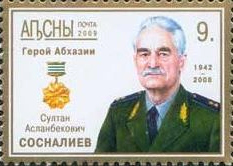
Sultan Aslambekovich Sosnaliyev was a Soviet Army officer of Circassian ethnicity who served as a commander of Abkhaz and North Caucasian forces during the War in Abkhazia and as the defence minister of Abkhazia in 1993–1996 and 2005–2007.
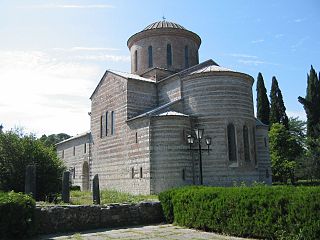
The Abkhazian Orthodox Church is an Eastern Orthodox church outside the official Eastern Orthodox ecclesiastical hierarchy. It came into existence when the Sukhumi-Abkhazian Eparchy declared on 15 September 2009 that it no longer considered itself part of the Georgian Orthodox Church and that it was "re-establishing the Catholicate of Abkhazia disbanded in 1795". Vissarion Aplaa is the Primate of the Abkhazian Orthodox Church since 2009 and is the self-proclaimed catholicos of the Church. It has two eparchies (dioceses) in Pitsunda and Sukhumi and is organized in 9 parishes.
The War in Abkhazia from 1992 to 1993 was waged chiefly between Georgian government forces on one side, Russian military forces on other side supporting separatist forces demanding independence of Abkhazia from Georgia. http://www.historyorb.com/russia/georgia.php Ethnic Georgians, who lived in Abkhazia fought largely on the side of Georgian government forces. Ethnic Armenians and Russians within Abkhazia's population, largely supported Abkhazians and many fought on their side. The separatists were supported by thousands of the North Caucasus and Cossack militants and by the Russian Federation forces stationed in and near Abkhazia.
Vladimir Emin-ipa Nachach was an Abkhazian Jurist, Major-General and politician.
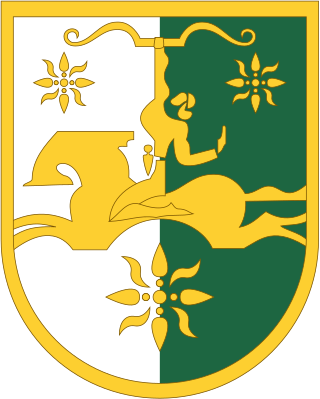
On 12 February 2011, Abkhazia held local elections for the 5th convocations of its local assemblies.
The National Forum Aidgylara is a socio-political movement in Abkhazia. It was founded during Perestroika as the ethno-nationalist movement representing the Abkhaz people. Aidgylara's founding congress took place on 13 December 1988 in the building of the Abkhazian State Philharmonic Orchestra, where the writer Alexey Gogua was elected its first Chairman.
Abkhaz neopaganism, or the Abkhaz native religion, is the contemporary re-emergence of the ethnic religion of the Abkhaz people in unrecognized Abkhazia, a revitalisation which started in the 1980s. The most important holy sites of the religion are the Seven Shrines of Abkhazia, each one having its own priestly clan, where rituals and prayers began to be restored in the 1990s.
The Abkhazian Revolution took place in 2014, when President Aleksandr Ankvab resigned after hundreds of demonstrators stormed his office. After mass protests in the capital Sukhumi and the occupation of his office on 27 May, Ankvab fled to his hometown of Gudauta and ultimately resigned on 1 June, after previously denouncing the demonstration as an attempted coup d'état.

Presidential elections were held in the Republic of Abkhazia on 24 August 2014. The sixth such elections since the post of President of Abkhazia was created in 1994, they were held early due to the resignation of President Alexander Ankvab on 1 June 2014 following the 2014 Abkhazian political crisis. Four candidates contested the elections, which were won by Raul Khadjimba, who received just over 50% of the vote.












